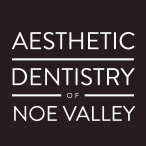


 Invisalign® has become revolutionary in orthodontics, proving an effective way to straighten teeth discreetly. The system uses smart technology and aligners to shift the teeth in as little as six to 18 months. While many are aware of this fact, there are specific dental conditions known as malocclusions that this revolutionary system is known to correct.
Invisalign® has become revolutionary in orthodontics, proving an effective way to straighten teeth discreetly. The system uses smart technology and aligners to shift the teeth in as little as six to 18 months. While many are aware of this fact, there are specific dental conditions known as malocclusions that this revolutionary system is known to correct.
Crowded teeth
Crowded teeth occur when there is insufficient space in the mouth for all the teeth to align properly. This condition can lead to overlapping or twisted teeth. Invisalign aligners can gradually shift the teeth into a more linear position, effectively creating more space and improving the alignment of crowding teeth. For severe cases, the orthodontist may recommend the patient for oral surgery and Invisalign afterward to ensure the teeth will be properly set.
Diastema
Gapped teeth, formally known as diastema, are a condition where there are spaces or "gaps" between the teeth. These gaps can be due to several reasons, such as missing or undersized teeth, abnormal jaw growth, or former habits such as thumb-sucking. Invisalign can effectively close these gaps by gently moving the teeth closer together over time. An orthodontist may recommend additional treatment — such as a crown, implant, or bridge for those with missing or undersized teeth — as part of the treatment plan.
Overbites
An overbite occurs when the upper arch of one's teeth protrudes extensively over the lower arch of teeth. This condition can cause aesthetic concerns, and in severe cases, it can lead to jaw joint problems, tooth wear, and speech problems. Considering Invisalign is personalized to each patient, the aligners can be crafted to keep the bottom arch in place while the top arch progressively shifts into the correct position. The new position will effectively improve the appearance and functionality of one's smile and bite.
Underbites
Underbites are the exact opposite of overbites, where the lower teeth arch protrudes past the upper teeth arch when the jaw is closed. This condition can cause problems with chewing, speech, and even the appearance of the patient's face. Invisalign can help correct mild to moderate underbites, making them more symmetrical with the upper teeth arch.
Crossbites
A crossbite occurs when one or more upper teeth bite inside the lower teeth instead of the outside. This can lead to misaligned jaws, receding gum lines, bone loss, teeth wear, and even painful jaw joints. Invisalign can correct a crossbite by targeting the misaligned teeth and shifting them into their proper position.
Open bites
An open bite is a condition where both the upper and lower teeth archs do not make contact when the mouth is closed, leaving a visible space between them. This condition can result from thumb-sucking, tongue-thrusting, or even genetic predisposition. While the teeth may be otherwise straight, Invisalign can change the jaws until they are symmetrical.
Discreetly realign your smile
No matter your form of malocclusion, we can craft a personalized treatment plan to address its needs. Invisalign is an effective way to discreetly and swiftly give you the smile of your dreams. To get started or learn more about the Invisalign system, call us today.
Request an appointment or call Aesthetic Dentistry of Noe Valley at 415-493-9143 for an appointment in our San Francisco office.
Related Posts
Invisalign® aligners offer a discreet and convenient alternative to traditional braces. These aligners allow individuals to straighten their teeth without the hassle of wires and brackets. However, as with traditional braces, it is important to properly care for them to ensure their effectiveness and longevity throughout your treatment. Here are some essential tips to help…
Invisalign® has emerged as one of the most popular alternatives to traditional metal braces. These teeth-straightening devices are virtually invisible when worn, as their name suggests, yet they can fix many of the teeth alignment issues braces have historically been used for.Examples of orthodontic issues Invisalign can be used to fix include crooked, crowded, poorly…
Research shows that Invisalign® is the most effective clear aligner brand on the market. Most patients choose these aligners over traditional braces. This dental straightening system can provide a comfortable and fast treatment. Knowing what the procedure is about can help prepare you for your upcoming Invisalign appointment.This clear aligner system uses flexible, thermoplastic material.…


